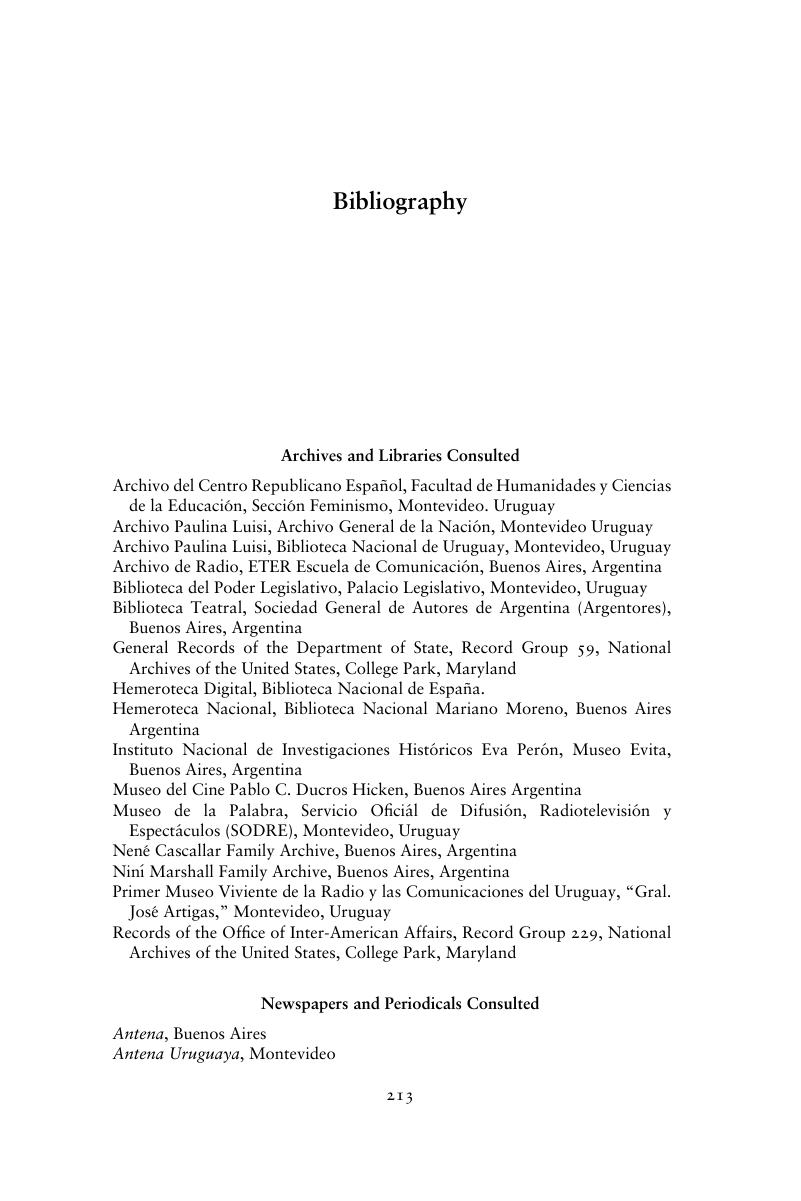Book contents
- Radio and the Gendered SoundscapeWomen and Broadcasting in Argentina and Uruguay, 1930–1950
- Radio and the Gendered Soundscape
- Copyright page
- Dedication
- Contents
- Figures
- Book part
- Introduction
- 1 Radio and the Modern Girl
- 2 A Station for Women in Montevideo
- 3 Feminism and Populism on the Airwaves
- 4 Chaplin in Skirts? Niní Marshall
- 5 Nené Cascallar
- Echoes of Soundscapes Past
- Bibliography
- Index
- References
Bibliography
Published online by Cambridge University Press: 05 August 2015
- Radio and the Gendered SoundscapeWomen and Broadcasting in Argentina and Uruguay, 1930–1950
- Radio and the Gendered Soundscape
- Copyright page
- Dedication
- Contents
- Figures
- Book part
- Introduction
- 1 Radio and the Modern Girl
- 2 A Station for Women in Montevideo
- 3 Feminism and Populism on the Airwaves
- 4 Chaplin in Skirts? Niní Marshall
- 5 Nené Cascallar
- Echoes of Soundscapes Past
- Bibliography
- Index
- References
Summary

- Type
- Chapter
- Information
- Radio and the Gendered SoundscapeWomen and Broadcasting in Argentina and Uruguay, 1930–1950, pp. 213 - 224Publisher: Cambridge University PressPrint publication year: 2015



